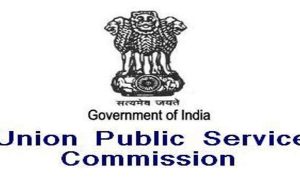If you have had a caesarean section, you might be thinking if vaginal birth is an option for you or not. Many women who have had one previous caesarean section can safely have a vaginal birth (VBAC) in subsequent pregnancy or you can choose to have a caesarean section. There are some factors that can help you and your doctor decide if VBAC is right for you. The most important factor to consider is your and your baby’s safety.
What Is The Success Rate Of VBAC?
Dr Dhivya Chandrasekar, Consultant Obstetrician & Gynaecologist, Sarjapur, Bangalore says “Studies have shown that success rate for planned VBAC is about 70-75% following one caesarean section. Only a minority of mothers who have had a caesarean section in the past will not be suitable to have a VBAC. Your obstetrician will advise you if it’s safe for you to attempt vaginal delivery based on your current pregnancy and previous medical history.”
Your chances of having a successful VBAC are high if
1. You have had previous vaginal deliveries either before or after your caesarean
2. Previous caesarean section was done due to baby reason
3. Your labour begins on its own just before or on the day of your due date
4. Your BMI is less than 30
5. During pregnancy both you and your baby are in good health
6. The time period from your previous caesarean section is eighteen months or more.
What Are The Advantages Of VBAC?

The following are some of the most common reasons for choosing a trial of labour after a caesarean section:
1. Influence on future pregnancies: If you intend to have more children, VBAC may help you to avoid the risks associated with multiple caesarean deliveries, problems with placenta in future pregnancies.
2. Lowers the possibility of surgical complications: VBAC is associated with lower rates of excessive bleeding, infection, and blood clotting in one or more deep veins of the body. VBAC may also reduce the likelihood of uterine removal surgery and injury to abdominal organs such as the bladder or bowel.
3. Reduced recovery time: VBAC will result in a shorter hospital stay than a repeat Caesarean section. By avoiding surgery, you will be able to resume your normal activities sooner.
4. Your baby will have less chance of initial breathing problems
5. You are more likely to be able to have skin to skin contact with your baby immediately after birth and be able to breastfeed successfully
What Are The Risks Of VBAC?
1. You may need an emergency caesarean section. There is 25% chance of this happening
2. There is 1 in 200 chance that scar on your womb may weaken and open in labour. This may put you and your baby at risk
However, we will be able to identify the problem early by closely monitoring you while you are in labour and delivering you early if any problem arises.
When Is VBAC Not Advisable?
You are not a candidate for VBAC if you have any condition that would make vaginal delivery impossible, or if you have had:
- A previous “classical” caesarean section i.e., where the incision involved the upper part of the uterus
- A uterine rupture during previous labour
- Pregnancy complications that require a planned caesarean section
What Can I Expect During VBAC?
Dr Dhivya Chandrasekar also says, “It’s important that you should deliver at a hospital where there are senior health professionals available to look after you and your baby. Your baby’s heartbeat will be monitored throughout labour to identify any signs of fetal distress or any early signs of a problem occurring with the caesarean section scar. Every method of pain relief in labour will be available to you including epidural analgesia.”
How Can I Prepare Myself For A VBAC?
Here are some of the ways shared by Dr Dhivya Chandrasekar to have a positive birthing experience
1. Attend antenatal classes to understand labour and birth. This will help you to have a positive attitude regarding vaginal delivery
2. Support in labour: Having good support in labour is one of the most important factors in helping women have a normal birth. This will also help you to cope with the labour pain.
3. Understand what your anxieties are: Talk to your obstetrician about your anxieties who will be able to support you and guide you to alleviate the anxiety.
4. Understand about pain relief options that are available to you.
5. You can safely do antenatal exercises and yoga as long as you and your baby are in good health.
Conclusion
There are pros and cons to both vaginal and caesarean deliveries. After a previous Caesarean section, deciding how to deliver your next child can be confusing. Consult your obstetrician to decide if it’s safe for you to try vaginal birth after caesarean section.






































